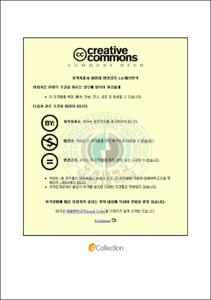땅콩을 첨가한 중학교 단체급식용 스파게티 토마토 소스의 배합비율 최적화
- Alternative Title
- OPTIMIZING INGREDIENT LEVEL OF SPAGHETTI SAUCE FOR MIDDLE SCHOOL FOODSERVICE USING BOILED PEANUT PASTE
- Abstract
- Spaghetti, being one of the favorite foods of middle school students, contains a considerable amount of animal protein ingredient from beef flesh and others in the existing sauce, thus has a possibility of putting students under over-nutritional condition. Therefore, this study aims to suggest a type of spaghetti with nutritional excellence which would satisfy the students' taste by developing the spaghetti sauce primarily using the peanut protein as the main ingredient.
The Response Surface Methodology(RSM) based on the mixture experiment design was applied to attempt optimizing the ingredient mixing ratio. In addition, the evaluation of the general ingredient and sitological quality was conducted for the peanut spaghetti sauce made by the optimized mixing ratio, which was also subject to a comparable analysis in comparison with the meat spaghetti sauce.
The optimized mixing ratio was decided as 70g of peanuts and 110g of tomato paste, the functional score of which was 6.9 based on the overall aceeptability. The functional score for the overall aceeptability according to the consumer aceeptability test result was 3.88, which is relatively a high preference score showing little difference from the meat sauce (3.97). This increased the potential of the newly developed recipe to be utilized as a school foodservice menu.
The protein content of the optimized sauce (5.21%) was slightly lower than that of the meat sauce (5.71%) but with no significant difference. The optimized sauce contained less fat (3.44%) than the meat sauce (5.06%), which indicates that there is a fat decline effect by substituting animal fat with vegetable fat, resulting in the overall calorie improvement.
Major amino-acids discovered in the sauce with optimized mixing ratio were glutamic acid, aspartic acid, and leucine in the order of amount, where the aspartic acid content was higher than that of the meat sauce.
In terms of protein digestibility(%), the optimized sauce with added peanuts scored 74.06, the meat sauce 72.18, and the spaghetti noodle 87.96. The peanut spaghetti which is a combination of the sauce and noodles scored 85.49 whereas the meat spaghetti scored 84.73. The sauce with added peanuts showed higher digestion rate and ,furthermore, the result demonstrated that the digestion rate is by far better with mixed intake of the sauce and noodles than separate intake of each.
Degree of starch hydrolysis(mg maltose) was 25.01 with the peanut-added optimized sauce, 24.72 with the meat sauce, and 25.94 with the spaghetti noodles. The peanut spaghetti which is a combination of the sauce and noodles scored 28.50, whereas the meat spaghetti scored 27.60. The peanut-added sauce had slightly higher rate of starch hydrolysis, and the combination of sauce and noodles had better rate of starch hydrolysis, identical to the protein digestion rate result
Therefore, the spaghetti sauce made of peanuts is expected not only to satisfy students' nutritional needs and taste but also to be utilized in the menu development of school foodservice usefully.
- Issued Date
- 2008
- Awarded Date
- 2008. 8
- Type
- Dissertation
- Keyword
- 땅콩 스파게티 소스 배합비율 최적화 중학교 단체급식용
- Publisher
- 부경대학교 교육대학원
- Alternative Author(s)
- Lee, Ji yeon
- Affiliation
- 부경대학교 교육대학원
- Department
- 교육대학원 영양교육전공
- Advisor
- 류홍수
- Table Of Contents
- Ⅰ. 서론 = 1
Ⅱ. 재료 및 방법 = 5
1. 실험재료 및 방법 = 5
1.1 재료 = 5
1.2 스파게티 소스의 제조 = 5
2. 혼합물 실험계획법과 반응표면분석(Response Surface Methodology) = 6
3. 관능검사 = 9
3.1 혼합비율의 최적화를 위한 관능검사 = 9
3.2 소비자 기호도 조사(Consumer Acceptability Test) = 10
4. 최적혼합비율 소스의 일반성분과 식품학적 품질평가 = 11
4.1 일반성분 분석 = 11
4.2 색도 = 11
4.3 단백질 품질평가 = 11
4.3.1 구성아미노산 분석 = 11
4.3.2 단백질 소화율(In vitro) = 12
4.3.3 단백질 효율비(C-PER: Computed Protein Efficiency Ratio) = 12
4.4 전분 가수분해율(In vitro) = 13
5. 통계분석 방법 = 13
Ⅲ. 실험결과 및 고찰 = 14
1. 관능검사 = 14
1.1 혼합비율의 최적화를 위한 관능검사 = 14
1.1.1 혼합비율의 최적화를 위한 관능검사 결과 = 14
1.1.2 반응표면분석결과 = 17
1.1.3 5개의 반응변수를 동시에 최대화하는 조건 = 26
1.2 소비자 기호도 = 28
2. 최적혼합비율 소스의 일반성분과 식품학적 품질평가 = 30
2.1 일반성분 = 30
2.2 색도 = 33
2.3 단백질 품질평가 = 35
2.3.1 구성아미노산 조성 = 35
2.3.2 단백질 소화율, C-PER = 37
2.4 전분 가수분해율 = 39
Ⅳ. 요약 및 결론 = 41
Ⅴ. 참고문헌 = 44
감사의 글 = 48
- Degree
- Master
- Files in This Item:
-
-
Download
 땅콩을 첨가한 중학교 단체급식용 스파게티 토마토 소스의 배합비율 최적화.pdf
기타 데이터 / 688.59 kB / Adobe PDF
땅콩을 첨가한 중학교 단체급식용 스파게티 토마토 소스의 배합비율 최적화.pdf
기타 데이터 / 688.59 kB / Adobe PDF
-
Items in Repository are protected by copyright, with all rights reserved, unless otherwise indicated.